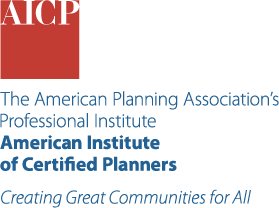Disaster-Proof Your Planning: Using Emergency Management Phases to Tackle Uncertainty

If your planning work intersects in any way with hazard mitigation or disaster recovery, you are probably familiar with the phases of emergency management. This well-established framework is utilized to mitigate risk and actively prepare for disasters, emergencies, and various threats. It is frequently employed by communities, cities, and counties in the context of hazard mitigation and disaster recovery planning.
Given this tool's value in mitigating, preparing for, responding to, and recovering from natural disasters, you may find it has an unexpected value-add: helping you prepare for and cope with threats to local planning activities.
Emergency Framework Supports Resilient Planning
Certain elements of community planning can rely on federal funding, programs, and legislative priorities. In the current climate of funding cuts and legislative changes, and the accompanying risks of disruption and uncertainty, this framework can help you assess these risks and plan alternative strategies to preserve and protect vital planning functions.
Phase 1: Mitigation — Assessing Risks to Planning
Mitigation refers to long-term measures intended to reduce or eliminate the risk and impact of disasters. Planners are likely familiar with this concept through their work on hazard mitigation plans, where they might contribute recommendations on zoning, land use, or infrastructure needs to prevent or reduce the exposure of homes and businesses to flooding, wildfire, or other hazards.
If federal funding cuts or regulatory changes are impacting your community and your planning work, adopting a mitigation mindset can help you better understand the specific risks to planning and develop long-term strategies to reduce or eliminate these risks. Start by evaluating how much your planning work relies on federal funding or regulations and how exposed this work might be to potential funding reductions or regulatory changes. Then collaborate with other local staff, departments, and agencies to develop long-term funding strategies, policies, or regulatory changes to preserve critical programs and planning activities.
Phase 2: Preparedness — Ready for Anything
Preparedness means the consistent practice of planning and evaluating local capabilities to respond to and recover from natural disasters. In disaster recovery planning, it centers on regularly stress-testing the community's ability to effectively deal with hazards and threats and ensuring that redundant systems can meet critical community needs if disaster strikes.
This focus on redundancy, active preparation, and honest evaluation of local capabilities can help you prepare for the potential loss of federal funding, the suspension of key federal programs, or shifts in federal legislative priorities. Convene relevant staff, communicate threats and risks to local programs and planning functions, and implement redundancies and backups to ensure the continuity of programs and core planning activities.
Phase 3: Response — Quick Action When It Counts
Response refers to the initial actions taken by a community both during and immediately following a natural disaster. The effectiveness of disaster response depends heavily on how well the community has addressed the preparedness phase of the framework.
If you have prepared your community and planning department for disruptions, you'll have a response plan in place if federal funding evaporates, key federal programs are suspended, or important data sets vanish. Your staff will be in the know and on top of the situation, you can turn to the alternative sources of funding you previously identified, and you can switch to local backups of federal datasets you downloaded just in case.
Phase 4: Recovery — Building a Better New Normal
Recovery refers to the community's ability to both restore critical capabilities and adapt to new circumstances and demands over months and years. Proactive mitigation can help to blunt short-term disruptions and enable more rapid recovery. This is heavily dependent on the scale of the event.
Likewise, effective recovery from the loss of funding or the suspension of federal programs will depend on the extent of your community's dependence on this aid and on the success of your earlier work to mitigate risk and prepare for disruption. Seize the opportunity to reevaluate business as usual and build planning processes and systems back better than before.
Putting it All Together
As planners, we have a wide range of tools in our toolbox for helping our communities, but we, too, can benefit from turning these tools towards our own profession's needs. The phases of emergency management offer a framework to conceptualize and cope with risks and threats to local planning practice. Thoughtfully engaging in this process can help you and your team assess these threats and develop strategies to preserve vital planning functions and sustain community well-being.
Top image: iStock/Getty Images Plus/ jonathansloane
ABOUT THE AUTHOR


